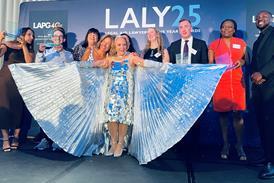The Court of Justice of the European Union has handed down its long-awaited judgment in Interflora v Marks & Spencer (Case C-323/09). The final outcome remains to be decided by the High Court, but the judgment provides important guidance for businesses using competitors’ trademarks as Google ‘AdWords’. However, some parts may leave the High Court, and practitioners, with more questions than it has answered.
Google provides a facility for advertisers to promote themselves in searches by purchasing keywords (‘AdWords’ in the Google system). When a user inputs one of these keywords into Google, the paid-for results will appear highlighted at the top or side of the page, with a brief advertising description, formerly marked as ‘Sponsored Links’ and now as ‘Ads’. Any number of parties can purchase the same keyword. Their ranking in the list of sponsored links depends on a combination of the price paid and the quality of the link.
Taking advantage of this service, Marks & Spencer (M&S) purchased ‘Interflora’ and several other similar words and phrases as keywords so that a search for that word results in a sponsored link to the section of the M&S website that sells flowers. The word ‘Interflora’ does not appear anywhere in the sponsored link displayed to the user.
Interflora sued for infringement of its UK and Community trademarks. It claimed that M&S was using an identical sign in relation to identical goods and services and used it in a way which, without due cause, took unfair advantage of or was detrimental to the distinctive character or repute of its marks (sections 10(1) and (3) of the Trade Marks Act 1994 and it equivalent Articles 5(1)(a) and 5(2) of Directive EEC/89/104). The High Court referred several questions to the Court of Justice for guidance. Some of these questions were withdrawn following the court’s decisions in Google France v Louis Vuitton (Case C-236/08) and related cases.
The questions which remained were:1) Did M&S’s actions in relation to the keyword constitute ‘use’ of the mark?2) If so, was that use ‘in relation to’ the relevant goods and services?3) Did that use fall within the scope of either or both of Article 5(1)(a) and 5(2) of the Directive?4) Does it make any difference if: (a) the presentation of the sponsored link was liable to lead some users to believe that M&S is a member of Interflora’s commercial network; or (b) Google did not permit Interflora to block competitors from purchasing its trade mark as a keyword?
Grasping the nettle
The court briefly answered questions 1 and 2 by referring to Google France. If an advertiser purchases a keyword to appear as a sponsored link, then it is using the keyword and such use is in relation to the advertiser’s goods and services, even if the keyword does not appear in the sponsored link itself.
It was common ground that at least one of the keywords purchased by M&S was identical to Interflora’s trademark and that the relevant goods and services were identical. It would appear that there was therefore a clear-cut infringement under article 5(1)(a). However, in line with previous judgments, the court stated that this use infringes only if it has an adverse effect on one of the functions of the trademark, such as: guaranteeing the origin or quality of the goods or services; advertising the goods or services; or investment in reputation.
As to the ‘origin’ function, the court held that there would be an adverse effect if the sponsored link suggests an economic link between the parties or is so vague that reasonably well-informed and observant users are unable to determine whether or not there is such a link. The court also said that Interflora’s inability to block keyword purchasing through Google (the High Court’s question 4(b)) was irrelevant in this context. On the contrary, if Interflora had the opportunity to block the sponsored links, then failure to do so may form an implied consent. It is also irrelevant if only some users have difficulty in grasping the fact that M&S is not economically linked to Interflora – ‘some’ does not necessarily mean ‘all’, or even ‘most’.
The court went on to hold that there was no adverse effect on the ‘advertising’ function. It may be that Interflora is forced to intensify its own advertising efforts, but this is inherent in any fair system of competition (see, again, Google France).
Finally, as to the ‘investment’ function, the court held that any use that substantially interferes with the proprietor’s acquiring or preservation of reputation in the mark must be regarded as an adverse effect. However, there is no such adverse effect where the only consequences are to oblige the proprietor to adapt its efforts to acquire or preserve the reputation, or that consumers switch to other goods or services. This statement appears rather unhelpful and seems to contradict itself. What other consequences could there be? If there are no other consequences, then where does this leave the ‘investment’ function?
Although the court was at pains to make a distinction between the ‘advertising’ and ‘investment’ functions, it did little to explain why that should be the case or, more importantly, how it can be applied in practice.
Turning to the High Court’s question on article 5(2), the court distinguished between detriment to the distinctive character of a mark (‘dilution’) and taking unfair advantage of the distinctive character or repute of a mark (‘free-riding’).
Where a sponsored link makes it clear that there is no connection between the parties, the court held that there is no dilution. However, it did not provide any substantive guidance on other cases where the position is not so clear or where no effort to distinguish has been made, instead leaving it for the High Court to reach its own conclusion. This was a missed opportunity for the court to fill an unfortunate gap in the guidance that many practitioners might have hoped for.
As regards free-riding, the court relied on its findings in L’Oréal v Bellure (Case C-487/07) and almost fell into the same trap of suggesting that any advantage taken of a trade mark is unfair (see, for example, [2010] EWCA Civ 535, per Jacob LJ at paragraphs 46-50). It being common ground that the ‘Interflora’ mark had sufficient reputation, the court was firmly of the view that the M&S use of the mark took real advantage of that reputation. The court indicated that offering a mere imitation of a trademark proprietor’s good or services, or use which adversely affects the functions of the mark, would not be fair competition and therefore is without due cause. However, the court refrained from providing any further substantial guidance on whether such use was with due cause or unfair, instead again leaving the question to the High Court.
Out of the woods?
The outcome of the case remains to be decided upon its return to the High Court. On a wider basis, this judgment is likely to be welcomed by brand owners in confirming that there may be circumstances where they can restrict the use of trademarks as purchased keywords (in sharp contrast to the judgment in Google France). However, there remain a number of areas which might require better clarification, and it will be interesting to see what further guidance the English courts can provide.
Jim McDonnell, DLA Piper



























No comments yet